Aldara
Aldara (Imiquimod) stimulates the immune system to produce interferon, a chemical that destroys cancerous and precancerous cells. . Aldara is used to treat actinic keratosis (a condition caused by too much sun exposure) on the face and scalp. Aldara is also used to treat a mild form of skin cancers called superficial basal cell carcinoma, when surgery would not be an appropriate treatment. The cream is generally well-tolerated, but some individuals develop redness and ulcerations..
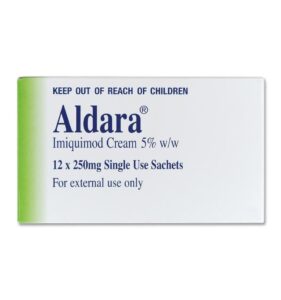
How to use Aldara
- Wash your hands and wash the skin area to be treated. Allow the skin to dry for at least 10 minutes before applying the medicine. Always wash your hands after applying the medicine.
-
Do not use Aldara on areas of broken, wounded, or burned skin. Wait until these conditions have healed before using Aldara.
-
One sachet contains enough cream to cover a treatment area of 20 square centimetres. If using the pump, four actuations of the pump is equivalent to the content of one sachet of Aldara cream..
-
Apply as directed by your doctor just before going to bed.
-
Do not cover the treated area with bandages or other waterproof coverings.
-
Leave the cream on overnight, usually for about 8 hours.
-
Stop using Aldara cream if you become pregnant, and do not use it if you are breastfeeding.
Non invasive
Proven Efficacy
Cost Effective
biopsy proven BCC
Aldara for treating superficial BCC
If Aldara is prescribed for treatment of superfical BCC:
-
Apply cream once daily for 5 days a week, usually on Monday through to Friday for 6 weeks.
-
Apply and rub in the cream to the visible tumour and to a 1 cm margin of skin around it.
-
Each pump pack has approximately 24 full depressions. Half a depression should be enough to treat one BCC. Alternatively, sachets should be opened and the content of the sachet used each time.
-
Doctor will see you at 2 weeks to assess your response to treatment. The lesion being treated should be slightly inflamed swollen and itchy. It should not be scabbing or painful.
-
If the reaction becomes very angry, contact QLD Skin Cancer Clinic ( 3352 3827).
-
If you feel unwell or if you feel flu-like with muscle aches and pains, contact QLD Skin Cancer Clinic.
-
At 3 months, doctor will assess your response to the treatment. BCC should not be visible at this stage.
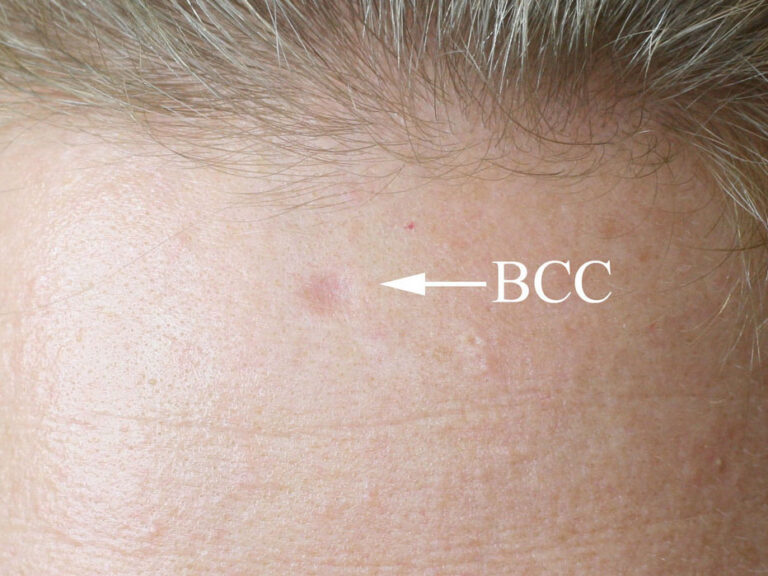
Treating solar keratosis with Aldara
Treatment protocol for management of sunspots (solar keratosis) with Aldara is different:
-
Apply cream once daily, on Monday, Wednesday and Friday for 4 weeks
-
Each pump pack has approximately 24 full depressions. Two depressions should be enough to treat the forehead, nose and upper cheeks.
-
Plan and distribute the cream in very small dobs carefully around the treatment area before rubbing in. Very little cream is required.
-
Contact us if the reaction becomes very angry.
-
Return for the doctor to assess the response to treatment weeks after starting the treatment. At this point, doctor might instruct to repeat the treatment for another 4 weeks.
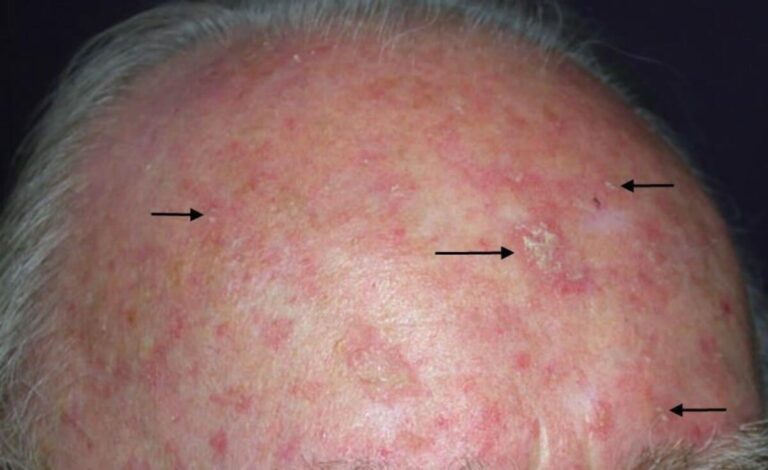
What to expect?
It is usual to develop an inflammatory reaction at the site of treatment with discomfort, redness, weeping and crusting. If the reaction doesn’t occur, then the treatment has probably not worked. Sometimes this reaction becomes quite severe – if so, please contact QLD Skin Cancer clinic to see whether the treatment should be discontinued. Usually, treatment can be restarted once the reaction has settled.
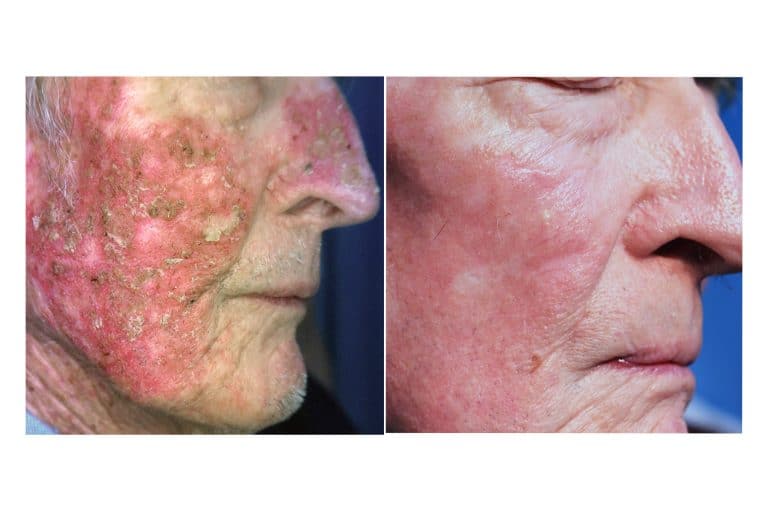
Side effects
- Common side effects of Aldara include:
-
mild skin irritation, itching, dryness, flaking, scabbing, crusting, redness, or hardening of the skin where the medicine was applied;
-
changes in the colour of treated skin;
-
headache, dizziness, chest pain, back pain;
-
cold sores, fever blisters;
-
cold symptoms such as stuffy nose, sneezing, sore throat;
-
nausea, diarrhea, loss of appetite
-
Severe allergic reaction to Aldara is very rare but in case of appearance of hives, developing difficulty breathing, swelling of your face, lips, tongue, or throat call 000 for immediate help.
Stop using Aldara and call your doctor at once if you have a serious side effect such as flu symptoms such as fever, chills, body aches, tired feeling, swollen glands.
It is common to have an area of permanently paler skin following treatment. In people with olive or darker skin, hyperpigmentation or brown patches may occur. These will usually settle with time and sun protection is important during this period. If severe local skin reactions occur, scarring can result. If treatment fails, another form of treatment such as surgery will be necessary.
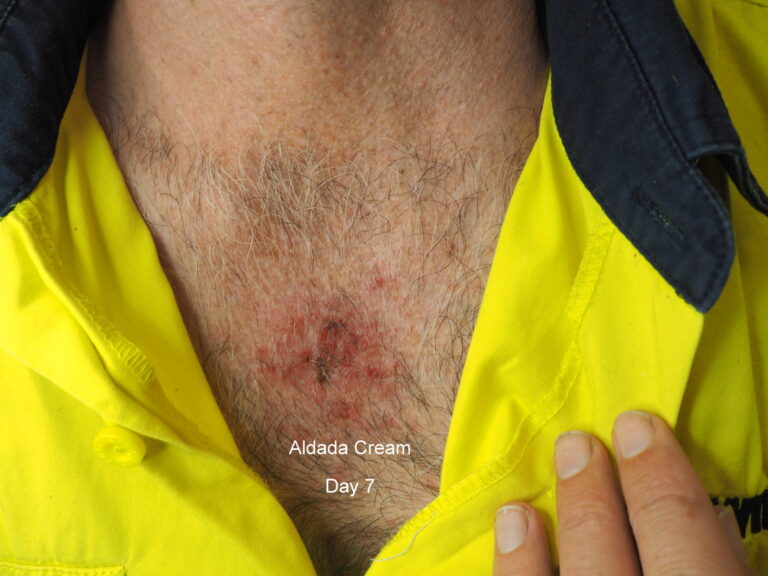
Effectiveness
- Solar Keratosis: Five randomised trialsindicate that up to 72% of patients achieve a 75% clearance.
- Superficial Basal Cell Carcinoma: 82% clearance for superficial BCCs.
- Intraepithelial Carcinoma: Imiquimod is 73% effective.


